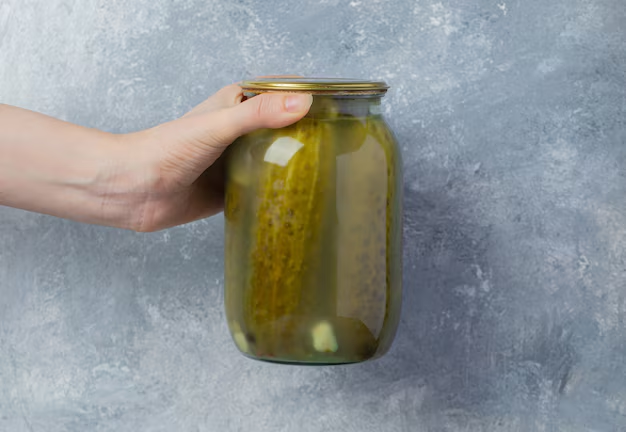Keeping Homemade Applesauce Fresh: How Long Will It Last in the Fridge?
Imagine this: you've just made a delicious batch of homemade applesauce. The kitchen smells of cinnamon, nutmeg, and, most importantly, apples. As satisfying as it is to eat fresh, it’s often not consumed all at once. Understanding how long homemade applesauce will last in the refrigerator is crucial for reducing waste and ensuring food safety. Let's explore the nuances of storing homemade applesauce, along with practical tips and relevant subtopics to ensure you get the most out of your culinary creation.
🌿 The Shelf Life of Homemade Applesauce
Understanding Applesauce Preservation
Homemade applesauce, unlike its store-bought counterpart, lacks preservatives, which naturally means a shorter shelf life. Proper storage techniques play a pivotal role in prolonging its freshness in the fridge.
- Typical Refrigerator Lifespan: Generally, homemade applesauce stays fresh for about one to two weeks when stored in an airtight container within the refrigerator. This duration can vary based on the freshness of the ingredients and the storage conditions.
- Signs of Spoilage: Look for signs like an off-smell, changes in texture, or visible mold. If any of these are present, it's time to discard your applesauce.
Factors Influencing Shelf Life
Several variables can impact how long your homemade applesauce remains fresh:
- Ingredient Quality: Fresh, high-quality apples and ingredients like lemon juice (a natural preservative due to its acidity) can extend shelf life.
- Hygiene: Preparing and handling the applesauce with clean utensils and hands can prevent bacterial contamination, which might hasten spoilage.
- Storage Practices: Storing your applesauce in small, shallow containers can help it cool more quickly, minimizing bacteria growth.
🍏 Storing Homemade Applesauce: Best Practices
Choosing the Right Container
Using the proper container is vital for storage longevity:
- Airtight Containers: These prevent the applesauce from absorbing other flavors in the refrigerator and minimize exposure to air which can promote oxidation and spoilage.
- Glass vs. Plastic: While both can be effective, glass containers are non-reactive and can better protect the applesauce from picking up smells and tastes from other foods.
Temperature Considerations
The fridge's temperature should be at or below 40°F (4°C) to slow bacterial growth. Keep your applesauce at the back of the fridge where temperatures tend to be more stable compared to the door.
🔄 Freezing Applesauce: Expanding Its Shelf Life
When you have surplus applesauce, freezing is an excellent alternative to refrigeration for prolonging its usability.
- Freezing Method: Allow the applesauce to cool completely before transferring it to freezer-safe containers or bags. Leave some room at the top for expansion as the sauce freezes.
- Thawing Safely: To use frozen applesauce, thaw it in the refrigerator rather than at room temperature to maintain safety by preventing bacteria growth.
🌟 Maintaining Quality and Flavor
Flavor Enhancement Tips
To ensure the best taste over time, consider these flavor-saving tips:
- Add Acidity: A small amount of lemon juice can help maintain the color and enhance the flavor while also acting as a natural preservative.
- Spice It Up: Spices like cinnamon and nutmeg not only enhance taste but also have intrinsic preservative benefits due to their antioxidant properties.
Reheating Tips
When ready to enjoy your applesauce, reheating gently in a saucepan can bring out the flavors even more without compromising its texture:
- Low and Slow: Heat applesauce gently, stirring often to avoid scorching.
- Double Boiling: Consider using a double boiler to provide gentle, even reheating.
🧊 Alternative Storage Methods
Beyond refrigerating and freezing, other preservation methods can make your applesauce last longer:
Canning Applesauce
Canning is a time-tested method to preserve applesauce with a shelf life of up to a year or more when stored in a cool, dark place.
- Proper Canning Techniques: Follow a reliable guide to ensure the applesauce is heated properly to kill bacteria and the jars are sealed to prevent contamination.
- Benefits of Canning: This method maintains the fresh flavor of your applesauce without the need for artificial preservatives.
🍎 Creative Uses for Leftover Applesauce
Applesauce is incredibly versatile beyond being a tasty treat on its own:
- Baking Substitute: Use applesauce as a healthier alternative to butter or oil in baking. It adds moisture and a subtle sweetness to muffins and cakes.
- Meat Tenderizer: Incorporating applesauce in marinades adds both flavor and softness to meats.
- Sauce or Dip: Mix with spices or mustard for a quick sauce or dip.
📝 A Handy Summary for Quick Reference
Here’s a quick guide to keeping your homemade applesauce fresh and delicious:
- 🗓️ Typical Fridge Life: 1-2 weeks when stored properly.
- 🥣 Storage Tips:
- Use airtight containers.
- Keep at stable, cold temperatures.
- 🚫 Spoilage Signs: Mold, off-smell, sour taste.
- ❄️ Freezing Option: Prolongs life for up to a year.
- 🌡️ Safe Thawing: Always in the fridge.
- 🥫 Canning: Preserves freshness for longer storage.
✨ Tastefulness Tip: Enhance and preserve flavor with citrus or spices like cinnamon.
Wrapping It Up
Homemade applesauce is a delightful and versatile treat, offering a touch of homemade goodness to your meals. By understanding how to store and extend its shelf life effectively, you can enjoy its taste and freshness longer. Whether you decide to eat it straight from the jar, use it in a recipe, or store it for later, these techniques ensure your homemade applesauce remains a staple in your kitchen — always ready to add a sweet and tangy touch to your culinary delights.
